Crosstown High: Innovative Memphis School in a Vertical Urban Village
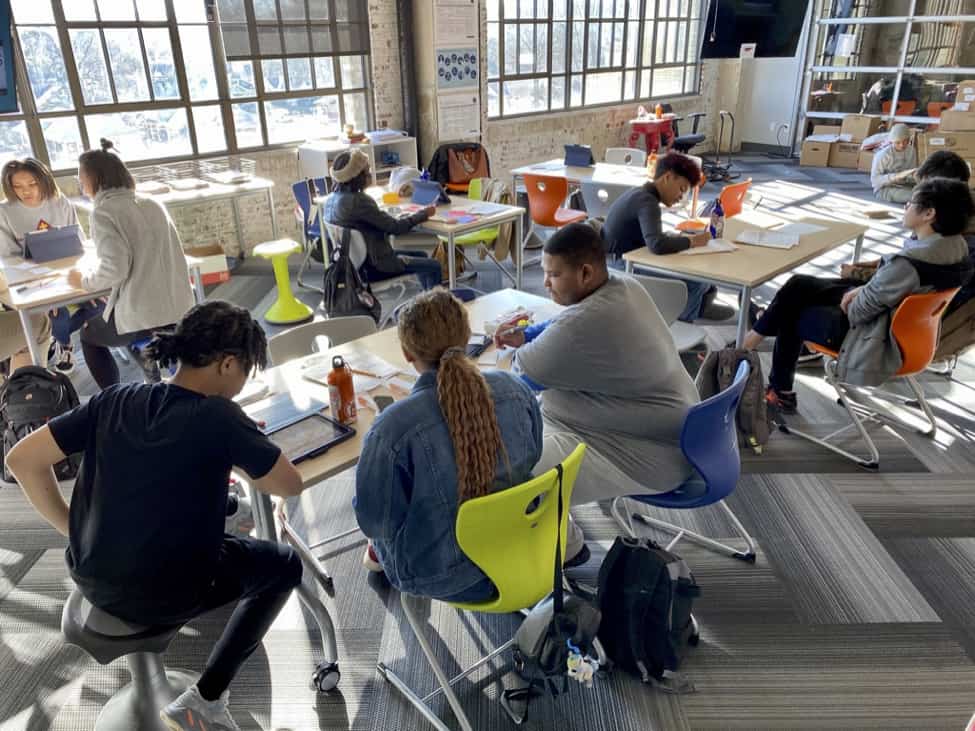
One of the most innovative schools in the country is located in one of the most innovative buildings in the country. Students at Crosstown High spend most of their school day on the fourth and fifth floor of Crosstown Concourse, a million-square-foot renovated Sears office and distribution center opened in 2017 just east of downtown Memphis. With retail facilities closing nationwide, the Concourse illustrates the positive community development that can be accomplished through public-private partnerships and inspired leadership.
The idea for the high school sprang to life when Ginger Spickler saw a billboard advertising big grants for innovative new high schools. She knew that the Concourse, which already housed numerous business, retail, health, and art tenants, would be a great place to learn. However, early plans to include a high school had stalled out.
Undaunted, she pulled together a team, created a proposal for Crosstown High and applied for a grant. In 2017, the team was awarded $2.5 million in funding from the XQ Institute, and the following year the diverse-by-design project-based school opened.
Students frequently engage in community-connected projects. The ninth grade team developed a place-based English and AP Geography unit called Project 901 (the local area code) that asked: “What challenges exist in Memphis neighborhoods and how can we design or adapt solutions to address them?” Students toured under-resourced neighborhoods and identified problems. Each student selected a challenge and used design thinking to identify potential solutions. They researched and wrote up proposals. Ryan Dixon, English teacher and director of project-based learning (below), provided individual feedback at project checkpoints.
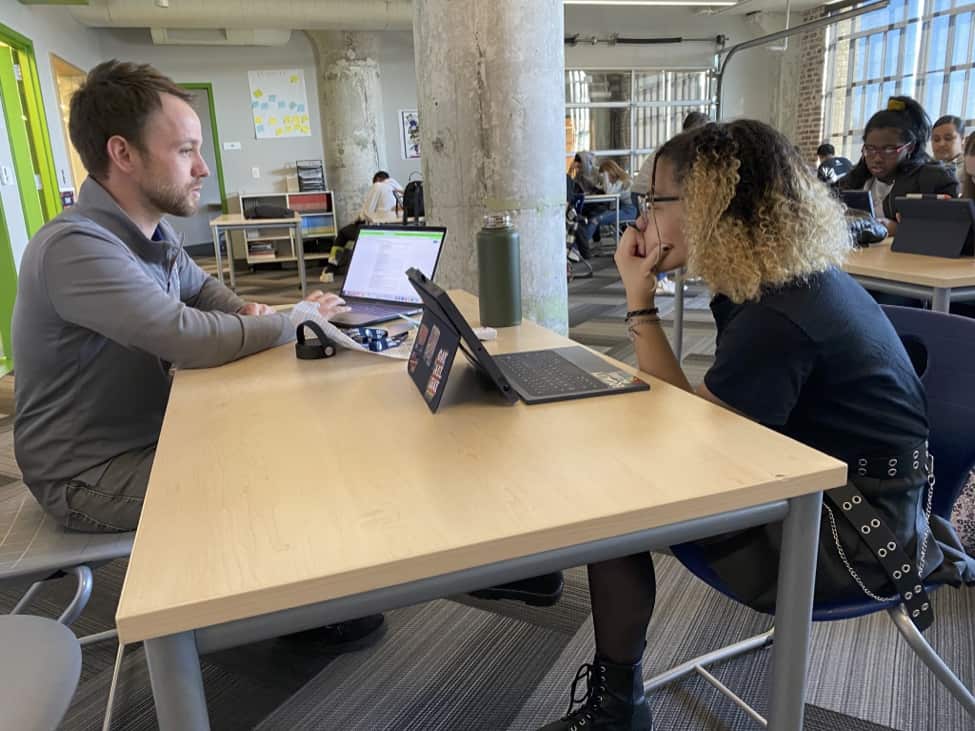 Braxton, a student who attended a traditional private school last year, likes access to real world skills and the strong art, theater and sports options at Crosstown. His 901 investigation was downtown homelessness.
Braxton, a student who attended a traditional private school last year, likes access to real world skills and the strong art, theater and sports options at Crosstown. His 901 investigation was downtown homelessness.
In tenth grade sociology class (featured image), teacher Lauren Mueller used game development to simulate civic and social situations where race, class and gender influence outcomes. Students explored hiring, judicial sentencing, and economic mobility. The other tenth grade cohort developed documentary films to explore similar issues.
In Algebra 2, teacher Shelley Cox created teams that tackled problems of exponential growth. Like her colleagues, Cox was also encouraging collaboration in teams, one of 12 competencies (pictured below) that Crosstown students develop and demonstrate across their studies.
Braxton explained that each class focuses on three competencies and students strive to move up one or two of four levels on each competency.
Juan, a tenth grader, likes the Socratic seminars on literature. “It makes it obvious if you read the book.”
The Crosstown team is working on a better competency tracking solution than the Canvas gradebook, and is testing Portfolium (acquired by Instructure last year) for artifact capture to help learners tell their stories.
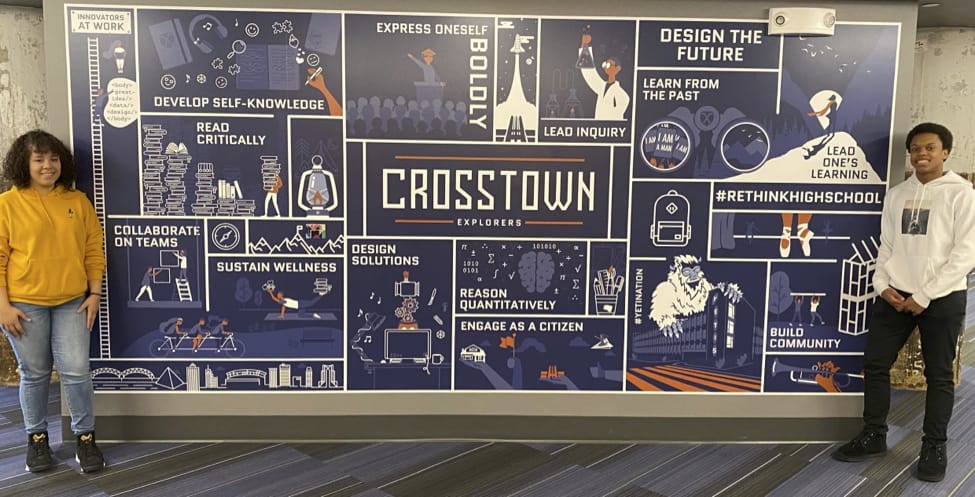
Crosstown High (@CrosstownHigh) occupies a total of three of the building’s floors, and serves about 280 students in ninth and tenth grade. It will grow to about 550 students at full enrollment. Each grade level has two cohorts of students. Each cohort has a team of five teachers who share a ‘Basecamp’ of connected classrooms and plan and often teach together.
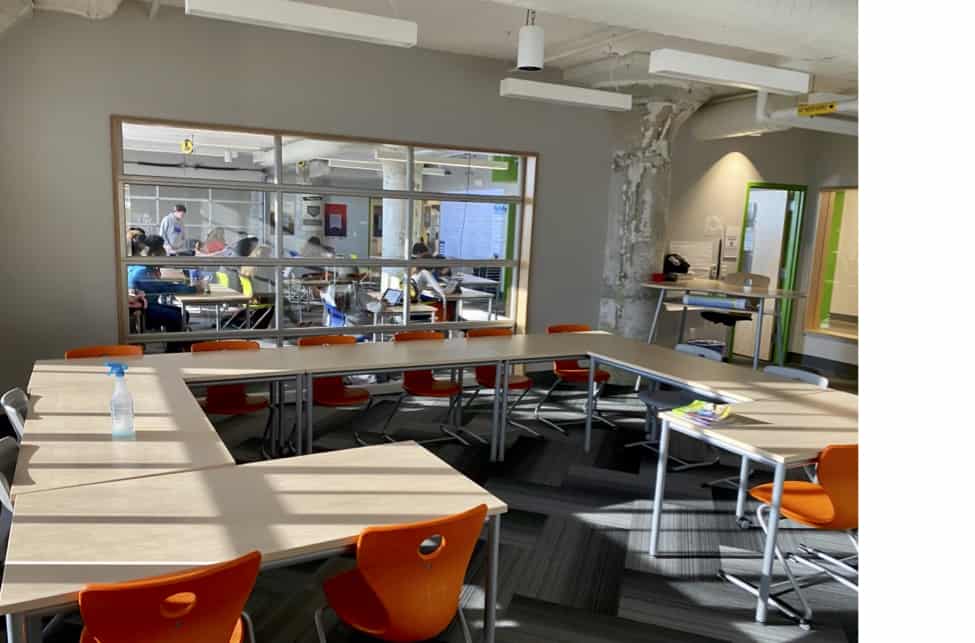
In its location, outreach, enrollment, culture and structure, Crosstown is diverse by design—an important development in Memphis where neighborhoods and schools are often segregated. The concourse and school demographics are representative of the city as a whole, making it an integrated microcosm abundant in opportunity for students and community partners to collaborate and ideate the future of Memphis.
The Crosstown High community is focused on community contribution. The purpose is: “To prepare students to understand and pursue solutions to the challenges faced by our city and world, and to give students the confidence to be agents of positive change now and in the future.”
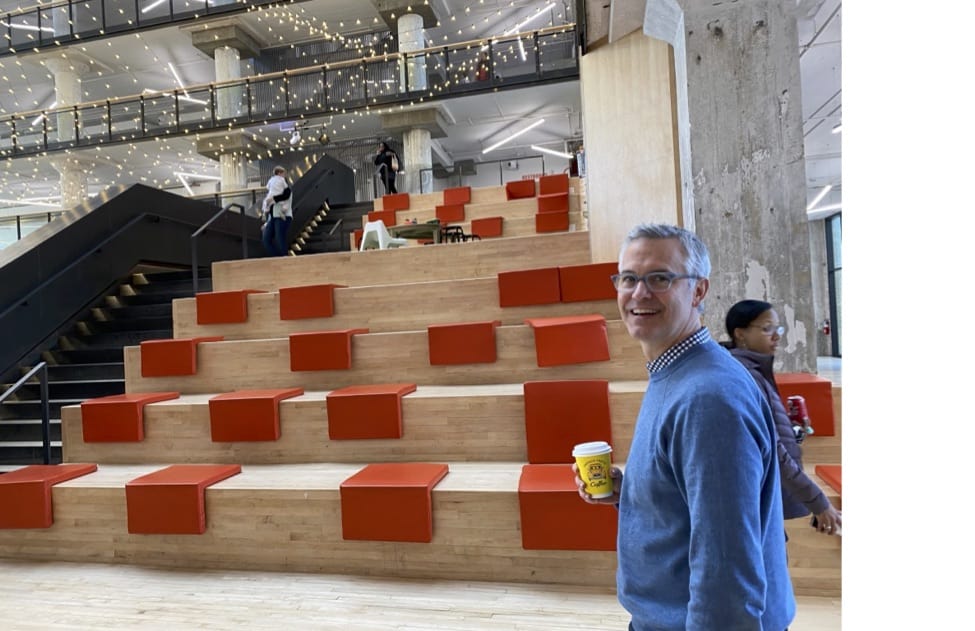
Being located in Crosstown Concourse creates numerous service and work-based learning and performing arts opportunities. Crosstown Arts, which grew from a team of two to a staff of 50 today, operates on the Concourse’s second floor, just above the high school’s first floor. They developed and now manage contemporary art galleries, two music venues, a cafe and bar, artist residency program and apartments, a shared art-making facility and a 420-seat black-box theater. The lobbies are full of art and frequently have live music. Guest speakers and performers visit the Big Stairs (pictured above) at lunchtime.
 Students also can visit great restaurants and work out at a huge YMCA on the second floor sponsored by Church Health. As a result of their school’s location and highly valuable for imagining possible futures, Crosstown students are spending time with an amazing variety of adults all day long.
Students also can visit great restaurants and work out at a huge YMCA on the second floor sponsored by Church Health. As a result of their school’s location and highly valuable for imagining possible futures, Crosstown students are spending time with an amazing variety of adults all day long.
They’re learning within the thriving center of a community on the rise. Rather than gentrification, this is an example of a community-led adapted use project. The combination of putting art, learning and health at the core and incorporating a creative mix of public, private and philanthropic funding made the vertical village far more vibrant than would have otherwise been possible.
In yet another wonderful improbability, a venture-backed robotics company will open next to the high school in March 2020. That probably wouldn’t have happened in Memphis three years ago—it certainly would not have been in Crosstown. The new urban village is enticing programmers from California and artists from the East Coast to consider a new kind of Memphis lifestyle—one that was imagined into being by a professor and an artist.
The Crosstown High team is designing the future of learning—a combination of project- and problem-based learning connected to opportunities in the Concourse and community and personalized and competency-based learning of critical success skills, all in a diverse community that reflects the future of Memphis.
For more, see:
- Five Learner-Centered Opportunities in Oakland
- A Student’s Perspective on Urban Place-Based Ed
- Contribution: Schools Alive with Possibility
Stay in-the-know with innovations in learning by signing up for the weekly Smart Update.
This post was originally published on Forbes.








0 Comments
Leave a Comment
Your email address will not be published. All fields are required.